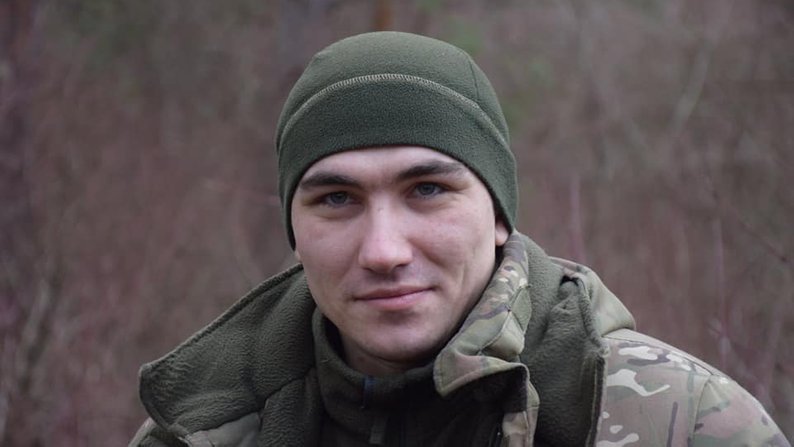Yuriy Armash, a combat medic from the village of Klembivka, in the Yampil community of Vinnytsia Oblast, found himself caught in the middle of Russia’s full-scale invasion in Oleshky, near Kherson. Unable to reach Ukrainian-controlled territory in time, he was captured on 3 April 2022.
The Russians held him captive for more than a year. During this period, he was confined in one of the most notorious torture chambers in Kherson Oblast, established by the occupiers in the Nova Kakhovka police station. He was also detained in Sevastopol and the infamous Colony No. 12 in Rostov Oblast, Russia, recognized as a concentration camp for Ukrainian prisoners of war and civilians.
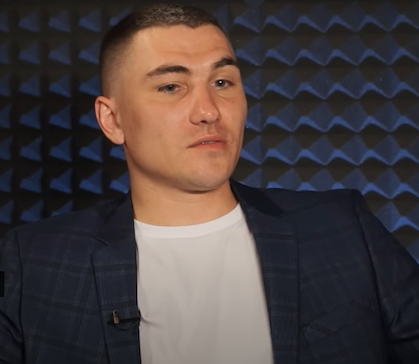
During his captivity, Yuriy Armash witnessed the occupiers’ brutal treatment of Ukrainians, including torture, and the assault of an underage girl and numerous women. In Nova Kakhovka, he heard the terrifying tales recounted by many prisoners and learned about the system of terror established by the Russians against the civilian population. He managed to save prisoners’ lives with whatever limited resources he had at his disposal.
He shares his experiences of captivity, the distressing scenes he witnessed, and the horrors in Russian torture chambers in a 20 October interview with the Center for Journalistic Investigation.
Russian troops invade Kherson Oblast
Yuriy Armash had just arrived in Oleshky, Kherson Oblast, to finish his military discharge paperwork when the large-scale war erupted on 24 February 2022. He was renting an apartment near the training grounds, awaiting his official release from service on 17 February. But that morning, gunfire and explosions jolted him awake.
“I was in the center of Oleshky on 24 February, at 7:50 a.m., and saw helicopters arrive, from which the Russians dropped their landing force between residential buildings. Another helicopter flew to the Antonivskyi Bridge. They had no markings, but when the soldiers began to descend, I could tell by their uniforms that they were Russians,” Yuriy recalls.
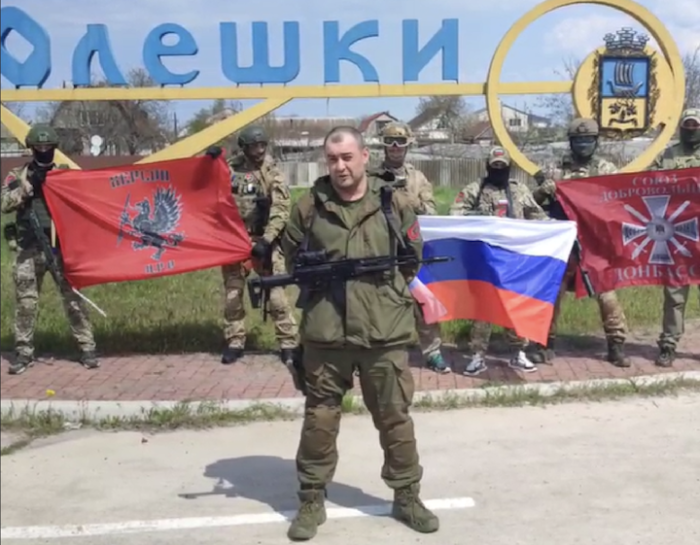
Chaos and panic engulfed Oleshky. Locals tried fleeing while others filmed the invasion on phones or swept store shelves bare. Yuriy rushed to buy groceries, uncertain of his fate. He saw no Ukrainian forces, just civilians panicking as machine gun fire erupted in the distance – the sound of Ukrainian troops attacking the Russian landing.
Taking cover in his apartment, Yuriy met two young men – Vladyslav and Mykola – also hiding there. Aged 21 and 24, the men had been near the village of Livi Sahy when war broke out. Keeping their identities secret initially, they stayed with Yuriy for safety.
“I told them they should stay with me. After getting to know each other better, I found out that one of them was from Kharkiv, and the other from Zaporizhzhia Oblast. I also learned that they were Ukrainian soldiers – but only at the end of March, when they dared to tell me about it. I immediately admitted to them that I was also a soldier and reassured the guys that soon everything would be fine and the enemy would be knocked out of Oleshky.”
Venturing outside between Russian patrols, the three men decided on 3 April to escape the occupation. The Russian military had begun to break down doors and move into apartments, constantly knocking on people’s doors and checking documents. The three men realized that if the Russians questioned them, they were finished. No one would believe that three young men from different parts of Ukraine just lived in a rented apartment in an occupied city.
Coordinating with Ukraine’s military, they found a driver to take them from Nova Kakhovka to the government-controlled territory for 17,000 hryvnias. Approaching Nova Kakhovka, they encountered a Russian checkpoint and gunfire.
“At the third checkpoint, they saw us through binoculars and started shooting at us. We tried to run, but when I heard bullets whistling near our ears, I knew they were shooting to kill. I shouted to the guys to stop and not move.” Yuriy recalls.
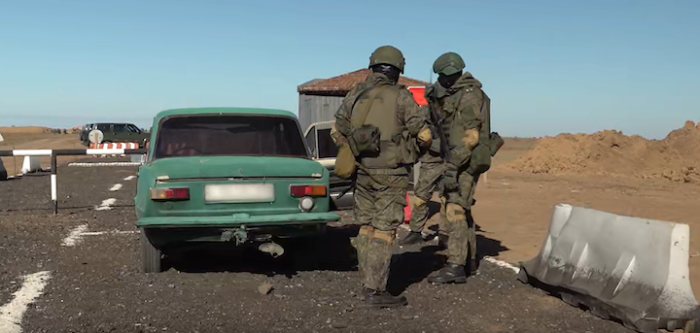
Pro-Russian militants from the self-proclaimed “Donetsk People’s Republic” (DNR) captured the men and took them to a tent. Accusing them of being Ukrainian intelligence, the Russian-backed militants stripped them naked and turned out their bags before beating them. The Rosgvardia commander (National Guard of the Russian Federation) ordered his men to make sure that the beating marks were not visible.
Torture and abuse in Nova Kakhovka prison
The next day, the three captives were taken to the Nova Kakhovka police station. Russian Federal Security Service (FSB) officers interrogated Yuriy as collaborator “DNR” police abused the young soldiers downstairs.
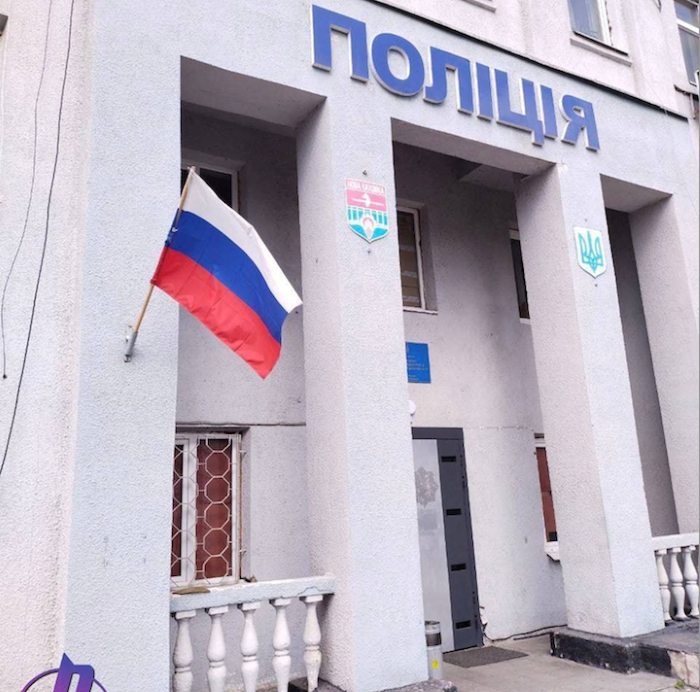
“And then they started ‘processing’ us: they forced us into stress positions, stripped us, and inspected us for tattoos. One of the guys had a lot of tattoos. That made the police officers so mad that they called him ‘a sinner’…
We were in such stress positions for about an hour while they continuously beat us… Then, their group leader said, ‘Maybe you should tell the truth?’ He prodded me with a rubber baton and stated, ‘Why lie when you’re chief of the medical service, a senior lieutenant medic?’ With that, it started again… I received blows with a rubber baton, while Vlad, who was heavily tattooed, had his head violently slammed against the table. All this time, our eyes were covered with duct tape. They did whatever they wanted.”
Russian war crimes: “denazifying” Ukrainians through deportation, torture, detention and filtration camps
They tortured Yuriy for refusing to reveal military information he didn’t have. Piercing his neck with an awl, they let it hang to inflict pain before stabbing his leg with a knife. Attaching wires to his ears, they cranked a field phone to shock him until he screamed.
The first three weeks were agonizing. The prisoners were given food once a day if anything was left after the Russians had eaten. What saved them from starvation was that relatives of other civilian prisoners brought food packages. The civilian prisoners shared with everyone; there was no “this is mine and you can’t have any.”
But the abuse and beatings continued in the dank police basement, with daily “interrogations” and little food. Yuriy tended to the injuries, using bed sheets for bandages when the Russians denied him medical supplies. He begged for basic antibiotics as wounds became septic.
“During the third interrogation, they offered me money and better treatment if I worked with them and provided medical care for their military. I realized they had big problems with drugs and medical care. I told them I wasn’t interested, I just wanted to go home. But, as a doctor, I would provide medical assistance to civilians if needed.”
Around 20 April, the Russians took Yuriy to treat battered and sick civilians. He helped some ten people a day and got to see the detention center’s logbook listing 65-70 current prisoners. Memorizing names, Armash secretly informed Ukraine’s Security Service (SBU) later.
Oksana Yakubova, the director of Nova Kakhovka Lyceum No. 2 in Kherson Oblast, was one of the many Ukrainian civilians in the prison chambers. She remembers Yuriy Armash well:
“When I was captured by the Russians and taken to a torture chamber in the police building, I crossed paths with a military medic named Yuriy in one of the cells. He saved everyone the occupiers brought in unconscious after their so-called ‘interrogations’ and torture. He managed to save more than one life.”
In the police station, everyone was subordinate to the Russian FSB, including the Rosgvardia, the soldiers from Kalmykia or Buryatia, and the local police collaborators. But among them, they had their own hierarchy. The “DNR” collaborators were subordinate to the Rosgvardia, and they, in turn – to the FSB. The collaborators dealt only with civilian prisoners, except for businessmen. The latter were handled by FSB officers, who demanded large sums of money from them.
Most detainees were young men – beaten ruthlessly with rubber batons and rifle silencers that left round puncture wounds. Yuriy helped roughly one hundred prisoners. He treated crushed bones and burns, telling the Russians when injuries required hospitalization. But the occupiers had barely any drugs or medical care themselves.
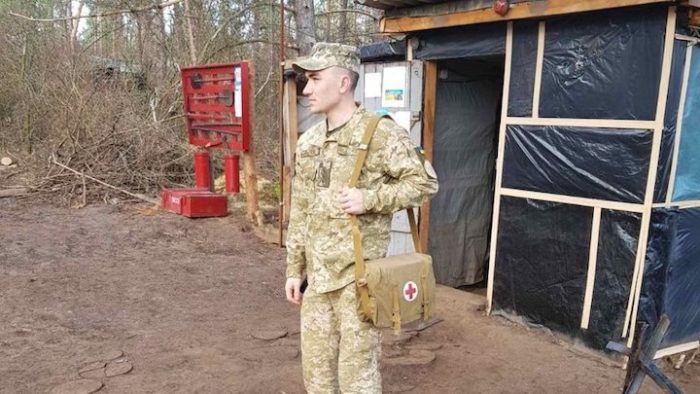
Yuriy had served in the Ukrainian Armed Forces even before Russia’s full-scale invasion of Ukraine. However, he had not anticipated the extreme brutality that followed after 24 February. Despite having witnessed a considerable amount of violence before, what he encountered left him deeply shocked. In the Nova Kakhovka police station, Yuriy saw an assortment of tools stained with blood, including hacksaws, chainsaws, axes, and machetes.
These instruments of torture were found on the second floor of the police station, where Yuriy was once summoned to assist a man aged between 40 and 45 years. The Russians subjected this man to a horrifying ordeal. They kicked him, attached a TAPik field telephone to his ears, doused him with water and sent electric shocks through his body. However, the building had many more secret chambers that Yuriy was not allowed to enter.
“The occupiers also forcibly removed tattoos they didn’t like. Some tattoos were cut off with knives, while others were burnt off using nitric acid. One particular man, ‘Uncle Sasha’, was responsible for this gruesome task. He presented himself as very pious. He was a well-known figure in Nova Kakhovka, attending church in the mornings and then turning up at the police station after lunch to torment the prisoners. Although he was nearly always masked, his voice gave him away, and everyone recognized him. He would identify tattoos he considered ‘ungodly’ and proceed to remove them,” Yuriy recounts.
One of the civilian captives, an employee of the Kakhovka Hydroelectric Power Plant, was subjected to continuous, brutal treatment. He had his veins pulled out during interrogation, and Yuriy could offer little assistance due to the nature of his injuries. Another detainee suffered a fractured leg from severe beatings. Yuriy stressed the need for an X-ray and cast. But the collaborators continued beating him mercilessly.
“They’d get drunk on any kind of alcohol and start thrashing the prisoners. They’d go into a room, choose their victim, take him to a windowless cell, handcuff him to a pipe, and simply beat him until they got bored.”
On 3 May 2022, Yuriy was moved to the female detainees’ wing, but he was often summoned to treat both men and women prisoners.
Yuriy recalls the youngest inmate, an 18-year-old, whose toenails were forcefully ripped out. He tended to the young man’s wounds for a long period because, following the torture, the youngster had received no medical attention whatsoever. The young man languished in his cell for about four days until his fingers began to rot. It was only then that they brought him to Yuriy.
In general, Yuriy found himself providing medical assistance more frequently during the day than at night. During the day, there were more women, while men were primarily interrogated at night. Younger persons outnumbered the elderly, as they were more likely to venture out during curfew hours for cigarettes, and the Russians apprehended them. Patrols were a common sight in Nova Kakhovka. In a single night, the Russians could arrest 5-10 people at once.
Torture as enjoyment and a means to an end
Yuriy also recollects a man, aged 35-37, who was brought in after enduring severe torture. Initially, he was subjected to abuse at the police station, and then they transported him to the banks of the Dnipro River. There, they fastened a rope around his neck, tightening it like a noose, and forced him to swim. The man managed to swim about 20-30 meters from the shore when the Russians abruptly yanked the rope towards them, strangling him.
Subsequently, they pulled him ashore, doused his legs with gasoline, set them on fire, and observed as they burned. The man screamed in agony, but they didn’t extinguish the flames immediately. He recounted the entire ordeal to Yuriy, who only saw the aftermath – the man’s severely burned legs.
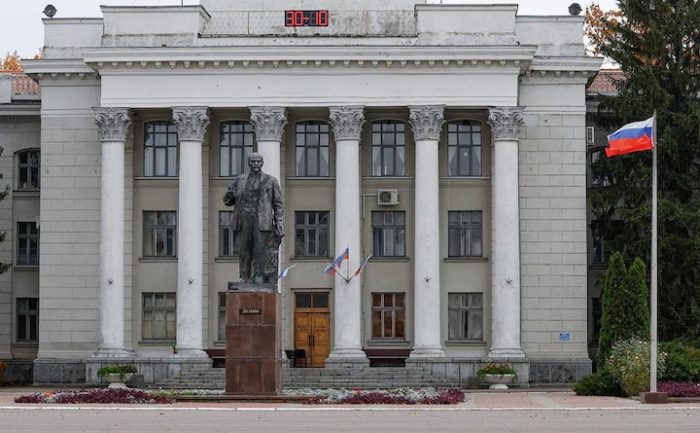
The women prisoners were also systematically molested and beaten.
“When Buryats and Kalmyks were at the police station, they often went after the young women – aged up to 25-30. They even sorted them by age and placed them in separate cells. From time to time, the women were taken out of the cell and led to another wing. Girls were taken there at night and raped. And when the Russians ended their rotation, they would sometimes go into the cells and rape women right there. My cell was nearby; I heard everything…” recalls Yuriy.
The worst case was a 14-year-old girl who tried to hide the fact that she had been savagely raped. Caring for the bleeding child, Yuriy demanded she be hospitalized. The Russians complied briefly before returning her to detention. They gave the girl some pills that Yuriy administered.
“I asked her if the Russians had done that to her. She silently lowered her head and said ‘yes.’ Then I knew for sure she’d been raped,” Yuriy says.
Transfer to Sevastopol, Crimea
On 19 August, Armash was transferred to a barracks holding 200 prisoners in Sevastopol, Crimea. They were held under tight control, but the Russians no longer beat them.
“They didn’t touch us there. There were surveillance cameras everywhere, even in the shower. You could only go to the toilet three times a day after breakfast, lunch, and dinner.”
The infamous penal colony No.12 in Rostov Oblast, Russia
On 11 September, Armash was sent to penal colony No.12 in Rostov Oblast, Russia. Violence resumed at the Kamenka-Shahtinsky prison as guards set timers for everything from meals to showers. Falling behind meant beatings with batons that broke on Yuriy’s body twice. Strip searches were common.
Around 460 Ukrainian prisoners of war were held there, with 80-86 women in separate cells. But nearly 40% were civilians – farmers, city residents, and others.
“I was shocked to see how many civilians there were. The Russians abused and beat them more because they didn’t know how to march properly.
We were treated like subhumans. They took us out of the vans in a dolphin pose. We had to bend over, hands locked behind our backs, and walk blindfolded. They deliberately walked us headfirst into a pillar or some other metal thing. The Russians probably did it just for fun, because we heard them laughing. It lasted until March 2023.”
Female Ukrainian judge jailed, shocked, threatened with firing squad in Russian captivity
In February 2023, inspections prompted intensified torture as prisoners were isolated and starved. Guards formed live corridors to hit detainees passing through with rubber batons. For “noncompliance,” Yurit was sent to solitary confinement for three weeks, living on dirty water and rancid cabbage.
“From the beatings, their batons broke on me twice. After the torture, I sometimes pissed in my pants, and for a long time after, the marks from the truncheons and boots remained on my body.”
Freedom and return to Ukraine
In late April 2023, after eight months of detainment, Yuriy was suddenly released. A Russian officer inexplicably asked what gift Yuriy would like for his upcoming birthday.
“The best gift is to get home,” he replied.
Exchanging contacts with his fellow prisoners beforehand, Yuriy promised to inform their families. On 26 April, he crossed into Ukraine near Sumy. Calling his mother, choked up with emotions, Yuriy could only utter a few words.
“I just said – Mom, I’m home,” he recalls.
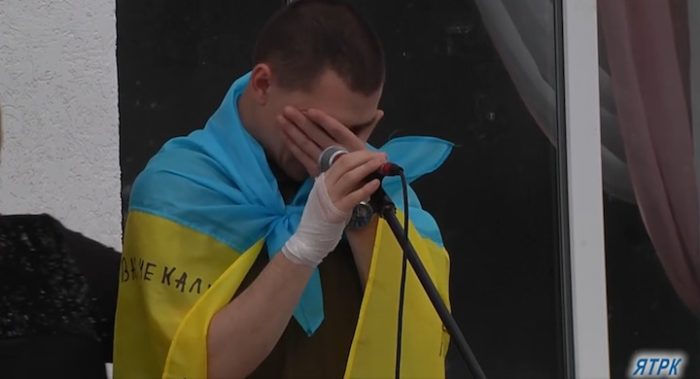
After numerous official interrogations and debriefings, as well as prolonged medical care, Yuriy was deemed unfit for further military service – a painful diagnosis after his long captivity. However, Russia’s brutality has left scars deeper than Yuriy’s physical wounds. But sharing his story remains a sacred duty, exposing the cruelty and pain inflicted on so many Ukrainian captives.
Today, Yuriy Armash is free. His friend Vladyslav was exchanged in late February 2023. But Mykola is still in the penal colony in Rostov Oblast.
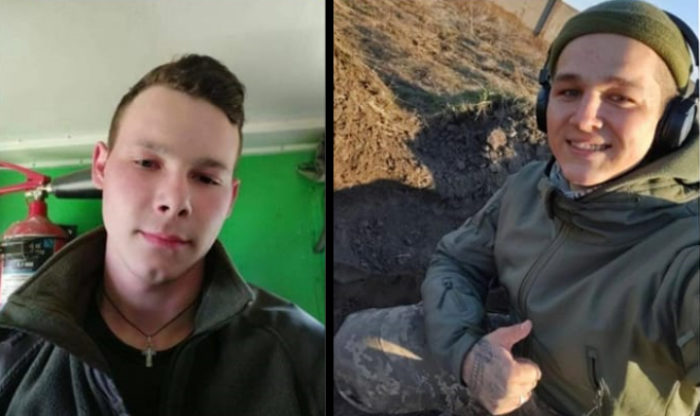
Reported by the Center for Journalistic Investigation / translated and adapted by Christine Chraibi
RELATED:
- Russian torture chamber network in occupied Ukraine part of strategy to extinguish Ukrainian identity – lawyers
- Ukraine finds Russian torture chamber in Mykolaiv Oblast
- Ten torture chambers found in liberated Kharkiv oblast, six of them in Izium – Police
- Russian occupiers set up torture chamber in recently occupied Balakliia, Kharkiv Oblast
- Ukrainian ombudsman shocked by scale of torture chambers in Kherson Oblast
- “I never cried, I just screamed in pain.” Survivors of Russian torture chambers speak

